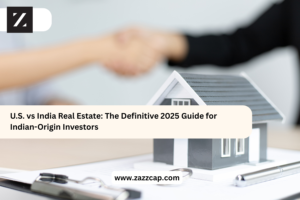Bengaluru isn’t just India’s tech capital anymore — it’s one of the most investable cities in Asia. For U.S.-based investors, especially Indian-origin professionals, it offers something most global markets don’t right now: strong yields, strategic growth, and a deep connection to home.
Why Bengaluru Still Has Headroom
1.It’s a Real Tech Economy — Not Just a Hype Cycle
Unlike cities where growth is speculative, Bengaluru’s economy is powered by actual jobs. 7,000+ startups. Global R&D centers. Deep engineering talent. People keep moving in — and they need places to live. That’s long-term housing demand, not market froth.
2. Infrastructure Is Catching Up — Fast
The Purple Line is extending. The Peripheral Ring Road is unlocking new corridors. Airport access is improving. All this infrastructure doesn’t just move traffic — it moves property prices.
Ask anyone who bought in Whitefield before the metro — they’re smiling right now.
3. Demographics Are on Your Side
India’s median age is 28. Bengaluru is younger. That’s a steady stream of renters, upgraders, and first-time buyers. The kind of market that gives investors both stability and upside.
Returns: What Investors Are Actually Seeing
Rental Yields
In zones like Whitefield, Hebbal, and Electronic City, rental yields range from 3.5% to 5%. Furnished or managed apartments near tech parks often do better. Consistent demand from professionals = steady income.
Capital Appreciation
Growth corridors have seen 10–15% YoY price increases post-2022. With infrastructure still catching up, smart buys today can see 15–30% upside over 12–36 months. That’s better than many U.S. metros — even before you factor in currency gains.
What Could Go Wrong: The Risks That Matter
Let’s not sugarcoat it — Indian real estate isn’t frictionless. Here’s what to actually watch out for:
- Not All Developers Deliver :
RERA helps, but enforcement varies. Always verify track records. A flashy brochure means nothing without execution.
- Title & Legal Complexity :
Land titles, change-of-use permissions, and builder dues can mess up a deal. Never skip legal due diligence.
- Market Noise :
Some areas are overhyped. Just because a celebrity launched a project doesn’t mean it’ll perform.
- Tax & Compliance :
You’ll need clarity on TDS, DTAA (India-U.S.), and capital gains. Tax mistakes can be expensive.
Investing from the U.S.: Here’s the Playbook
You don’t need to fly down. But you do need structure:
- Set Up NRE/NRO Accounts : These let you fund your purchase and receive income legally.
- Choose RERA-Compliant Properties Only: No exceptions. If it’s not RERA registered, walk away.
- Work With Cross-Border Experts :That includes legal, tax, and real estate professionals who know both U.S. and Indian frameworks.
- Don’t Rely on Marketing Material : Ask for past project data. Look at market comps. Make decisions based on numbers, not renderings.
Why 2025 Is a Window — Not a Guarantee
Infrastructure momentum doesn’t last forever. Once the metro is complete, once the airport roads are operational — prices recalibrate. You don’t want to be the last investor in a now-expensive market.
Delaying could mean:
- 15–20% higher entry costs
- Lower rental yields
- Reduced inventory in top micro-markets
- Missing early-phase project pricing
Choosing the Right Partner (Without the Pitch)
If you’re investing from abroad, local knowledge is everything. Not just a company with brochures — a team that has skin in the game, understands your timezone, and can help you manage the asset post-purchase.
Whether that’s ZAZZ Capital or someone else — vet them like you’d vet a wealth manager. You’re not buying a sofa. You’re allocating capital.
FAQs: What Smart U.S. Investors Ask Before They Buy
Do I need to visit India to invest?
No. Most transactions can be executed remotely with Power of Attorney and digital KYC.
What kind of ROI is realistic in Bengaluru right now?
For the right micro-market: 15–30% over 1–3 years, including appreciation and rental yield.
Can I repatriate profits legally?
Yes — through proper NRO/NRE channels and by complying with RBI rules. You may need to report in the U.S. under FATCA.
Is Indian real estate safer than U.S. stocks?
Different asset classes. Real estate is less liquid but offers tangible, inflation-hedged growth — with an emotional edge, especially if you’re Indian-origin.




